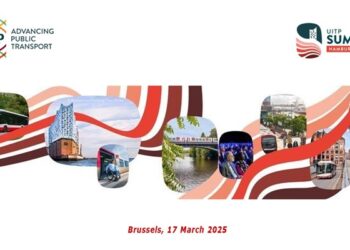Siemens Intelligent Traffic Systems is pleased to announce that it will provide Connected Vehicle (CV) solutions in the form of Roadside Units (RSU), On-Board Units (OBU), CV applications and RSU central management software for Gainesville’s Trapezium Signal Phase and Timing (SPaT) project, which will be one of the largest state-funded SPaT CV deployments in the U.S.
The project will take place along the 4-road area surrounding the University of Florida, descriptively called “the Trapezium” – covering 27 intersections. The university environment surrounded by this area provides a rich spectrum of automobile, transit, bicycle, and pedestrian activity and is an ideal location to further examine and quantify the significant benefits of CV technologies.
“Siemens Mobility is excited to be leading the momentum for CV deployment in cities around the country,” said Marcus Welz, president of Siemens Mobility’s Intelligent Traffic Systems business in North America. “The inevitable safety and mobility benefits provided by utilizing CV technology is becoming more mainstream, thanks to the efforts of agencies like FDOT, who have really stepped up to push Florida into the spotlight of this disruptive new force.”
“The Florida Department of Transportation is committed to incorporating the latest technology and transportation solutions to strengthen safety on our roadways,” said Raj Ponnaluri, FDOT Connected Vehicles, and Arterial Management Engineer. “We’re proud to develop this exciting CV technology project that has the potential to make a major impact on driving behavior in the Gainesville area.”
The project is expected to be completed by 2021, and is planning to include the following CV capabilities:
- SPaT MAP Display Signal Timing, signaling remaining time to a Green signal
- Red Light Violation Warning
- Wrong Way Entry (WWE)
- Exit Ramp Deceleration Warning (ERDW)
- Curve Speed Warning (CSW)
- Emergency Electronic Brake Lights
- Forward Collision Warning
- Intersection Movement Assist
- Work Zone Warning
- Do Not Pass Warning
- Speed Limit Warning
These are applications that have already been successfully tested in other cities. This technology has been previously installed in the state of Florida and has been proven to be interoperable and compatible with third party devices.
Siemens’ history with DSRC communications and CV applications in the U.S. extends back to 2007 with its involvement with the USDOT Connected Vehicle Test Bed in Oakland County, MI. This was a testing environment intended to advance the state of ITS practice by providing a cutting-edge model operating environment for CV and DSRC. Siemens was one of the first controller manufacturers to output SPaT data at the testbed.
Siemens Mobility has been supplying traffic-related products and services to FDOT, as well as local municipalities in Florida for over 40 years. Most recently, Siemens Mobility has been the primary CV technology partner in the high-profile Tampa Hillsborough Expressway Authority (THEA) USDOT Connected Vehicle Pilot Project, supplying over 40 RSUs and driving the development of 13 V2I and V2V applications.
Siemens Mobility, Inc., is a leader in Connected Vehicle and intelligent transportation technologies, and is working with cities and states, including Tampa, FL , New York, NY, Las Vegas, NV, Anaheim, CA, Columbus, OH, Madison, WI, Austin, TX and Montreal, Canada, to design and deploy these types of intelligent systems. Siemens Mobility, Inc. is also a member of the USDOT Affiliated Test Bed for Connected Vehicle technologies, a group pursuing wide-spread deployment of wireless communication systems between vehicles and road infrastructure.
Siemens Mobility is a separately managed company of Siemens AG. As a leader in transport solutions for more than 160 years, Siemens Mobility is constantly innovating its portfolio in its core areas of rolling stock, rail automation and electrification, turnkey systems, intelligent traffic systems as well as related services. With digitalization, Siemens Mobility is enabling mobility operators worldwide to make infrastructure intelligent, increase value sustainably over the entire lifecycle, enhance passenger experience and guarantee availability. In fiscal year 2018, which ended on September 30, 2018, the former Siemens Mobility Division posted revenue of €8.8 billion and had around 34,200 employees worldwide. Further information is available at: www.siemens.com/mobility.


































